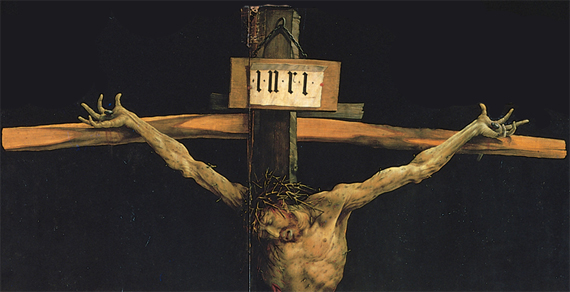 Any one who has served on a board of any kind, hospital, school, church; anyone who has dealt with financial matters and feels any kind of responsibility; anyone who is part of an institutional organization has to deal with metrics. These are the measurements that tell us how we are doing. What is the “bottom line”, are we in the black, what the cost to benefit ratio? We look for the constant betterment of these measurements and if we don’t find them we look for a program to fix them. There is always something else that we can “do”. Now these kinds of things are good “first article” gifts and they need to be studied and understood even in the church. We should keep records and ask questions about who we are and where we are going and what the cost is to keep doing the things that we have been doing. At the same time in these days of declining memberships and church attendance there is a tendency to look to metrics and programs rather than to Christ. We fall into that trap that if we aren’t growing and expanding – bad; more numbers – good. I remember back in the day when we had young people in our churches one of the metrics was “how many youth attended the youth group meetings”. I had to write “0” because we had no meetings. The church in the big town had 30-40 youth attending theirs so I felt bad. I know that they were usually ski trips and pizza parties so it wasn’t too hard to jack up the attendance. When we dug deeper though and asked the question, “of the youth in your church how many attend worship and receive the sacrament?” I could say about 98% while the bigger church said about 10%. So which is the bigger measure of success? Is measuring “success” even appropriate? At the same time those who don’t want to measure anything and simply say that God wants them to be faithful have always made me nervous too. That covers a multitude of sins.
Any one who has served on a board of any kind, hospital, school, church; anyone who has dealt with financial matters and feels any kind of responsibility; anyone who is part of an institutional organization has to deal with metrics. These are the measurements that tell us how we are doing. What is the “bottom line”, are we in the black, what the cost to benefit ratio? We look for the constant betterment of these measurements and if we don’t find them we look for a program to fix them. There is always something else that we can “do”. Now these kinds of things are good “first article” gifts and they need to be studied and understood even in the church. We should keep records and ask questions about who we are and where we are going and what the cost is to keep doing the things that we have been doing. At the same time in these days of declining memberships and church attendance there is a tendency to look to metrics and programs rather than to Christ. We fall into that trap that if we aren’t growing and expanding – bad; more numbers – good. I remember back in the day when we had young people in our churches one of the metrics was “how many youth attended the youth group meetings”. I had to write “0” because we had no meetings. The church in the big town had 30-40 youth attending theirs so I felt bad. I know that they were usually ski trips and pizza parties so it wasn’t too hard to jack up the attendance. When we dug deeper though and asked the question, “of the youth in your church how many attend worship and receive the sacrament?” I could say about 98% while the bigger church said about 10%. So which is the bigger measure of success? Is measuring “success” even appropriate? At the same time those who don’t want to measure anything and simply say that God wants them to be faithful have always made me nervous too. That covers a multitude of sins.
The problem is again the perception of the thing. We use our metrics in the church to “stand above the church”, to command the church, to try and fix the church or to order the church for success, and in so doing we forget that it is Christ’s Church. The church which is the dispenser of the means of grace, the body of Christ, becomes in our eyes a franchise using a brand name that needs to grow and function by market forces. And so we treat this “holy thing” as a commodity and we look at numbers and costs and “funding”.
What we forget is that behind this seemingly humble and sometimes pathetic thing we call the church is the body of Christ. He “disguises” himself there and can only be perceived by faith. The Divine nature of God always disquises itself or we would be destroyed. As Sasse says, ”
Nowhere does this disguise, the veil behind which the divine nature hides itself, become so evident as in the passion. Gethsemane and the cry, “My God, my God, why have you forsaken me!” are the end of all attempts to misinterpret the gospel as the message of the triumphant epiphany of a savior-god after the manner of the ancient mystery religions, or as the epic of a religious hero. How often has such a theology of glory tried to take hold of the gospel. The miracles of Jesus have been understood again and again in this way. Certainly Jesus by a miracle like that of Cana, as the text itself declares, manifested his glory. But explicitly it is said: “And his disciples believed on him.” Not the people of Cana, not the five-thousand whom he fed, not the sick whom he healed, not even the dead whom he raised from death believed in him. For also these deeds were at the same time a revelation and a disguise of his divine majesty. In faith, only his disciples saw his glory. Even his resurrection was not a demonstration for the world. Faith always deals with hidden realities. Also for the apostles and the apostolic church, faith in Jesus Christ the LORD was faith in his secret glory, in God hidden in the flesh, in the true divinity within the true humanity.
This secrecy finds its deepest expression in the cross. “Hidden under the cross”, that is Luther’s formula for this character of the divine revelation. Hidden under the cross is his royal office, his kingdom, the church (“What he quickens by his Spirit is always the same kingdom of Christ, whether it be revealed or hidden under the cross” – CA Apol. 7/8,10). “Hidden is the church, concealed are the saints” (WA 18, 652, 23). It cannot be otherwise, for “all objects of faith are necessarily hidden” (WA 18, 653). Hidden is the word of God in the letters and words of the Bible, in the human word of the preacher. Hidden are the true body and blood of Christ in the earthly elements of the bread and wine at the Lord’s Supper. Faith and the cross belong together. The cross demands faith against the evidence.
Maybe in our “metrics” we should ask one question and look for one number – “how many times have you truly preached the cross?” Sasse again –
How many secular illusions have entered our thinking about the church and the world! Among all the illusions which have taken the place of religion in the souls of modern men, there is also the contemporary theology of glory. It is not only nationalism and pacifism, liberalism and socialism, fascism and communism, militarism and antimilitarism which are deprived of the glory they used to have in the eyes of their adherents. Also deprived of such glory is that Christianity which prevailed in all denominations over the last centuries. It is a Christianity which dreamed of a Christian nation or a Christian world, a Christian faith which has been secularized by the theology of glory. Now the time has come to hear the theology of the cross. When the church today asks “What shall I preach?” the only answer can be: “Preach one thing, the wisdom of the cross!”

